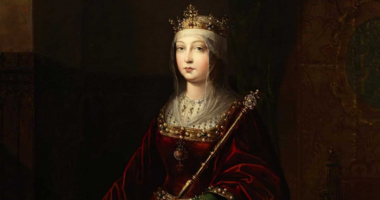Top 7 Interesting Facts about Mao Zedong
In the current era, China is seen as a worldwide superpower. Who was mostly responsible for the foundation of this strong nation? Welcome to this page, where ... read more...we shall talk about some Mao Zedong facts. Chairman Mao Zedong is referred to as a wonderful leader by some and a brutal dictator by others. Whatever your point of view, there is no disputing that Chairman Mao had a colorful and even bizarre existence. The following list is some interesting facts about Mao Zedong.
-
Mao developed his political ideas by reading extensively because of his early interest in politics. Numerous historical figures, including George Washington and Napoleon Bonaparte, were major inspirations for him. Despite his passion of study, he had to quit school at the age of 13 to work on the family farm alongside his father.
On December 26, 1893, in the Hunan town of Shaoshan, Mao was born. Mao Yichang, his father, rose from a lowly peasant to become one of Shaoshan's richest farmers. Mao entered Shaoshan Primary School when he was 8 years old. Despite learning the Confucian values, he subsequently stated that he preferred classic novels like The Romance of the Three Kingdoms and Water Margin above the traditional Chinese classics that preached Confucian morals. When Mao was 13 years old, he completed his primary education. His father then had him marry the 17-year-old Luo Yixiu in an arranged union, bringing together their respective land-owning families. Mao refused to acknowledge her as his wife, turning into a vehement opponent of arranged marriage, and temporarily relocating.
Mao read voraciously and gained "political consciousness" from Zheng Guanying's booklet, which bemoaned the decline of Chinese authority and pushed for the adoption of representative democracy while working on his father's farm. Mao was interested in history and was motivated by the valor and fervor of George Washington and Napoleon Bonaparte. Mao endorsed the demonstrators' demands, but the armed forces repressed the dissidents and murdered their leaders. These protests, led by Gelaohui, broke out in Changsha, the capital of Hunan, during a famine. Starving peasants took his father's food when the famine reached Shaoshan. Though he thought their behavior was morally reprehensible, he expressed sympathy for their predicament.
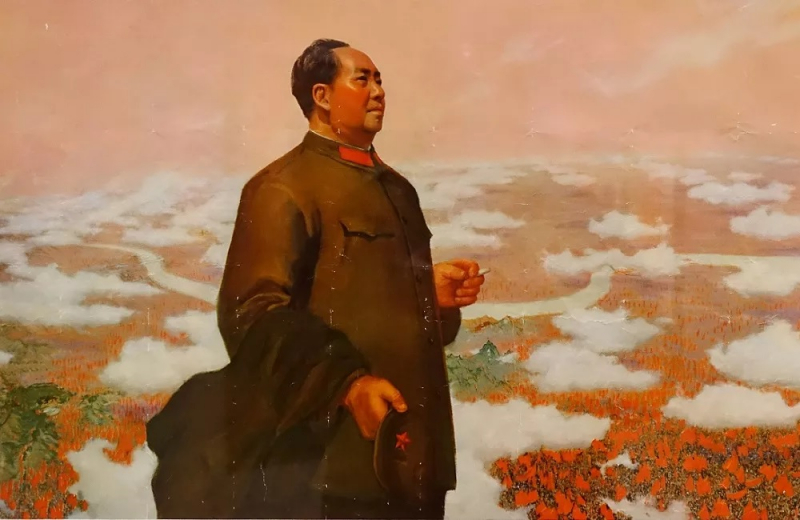
Source: wondriumdaily 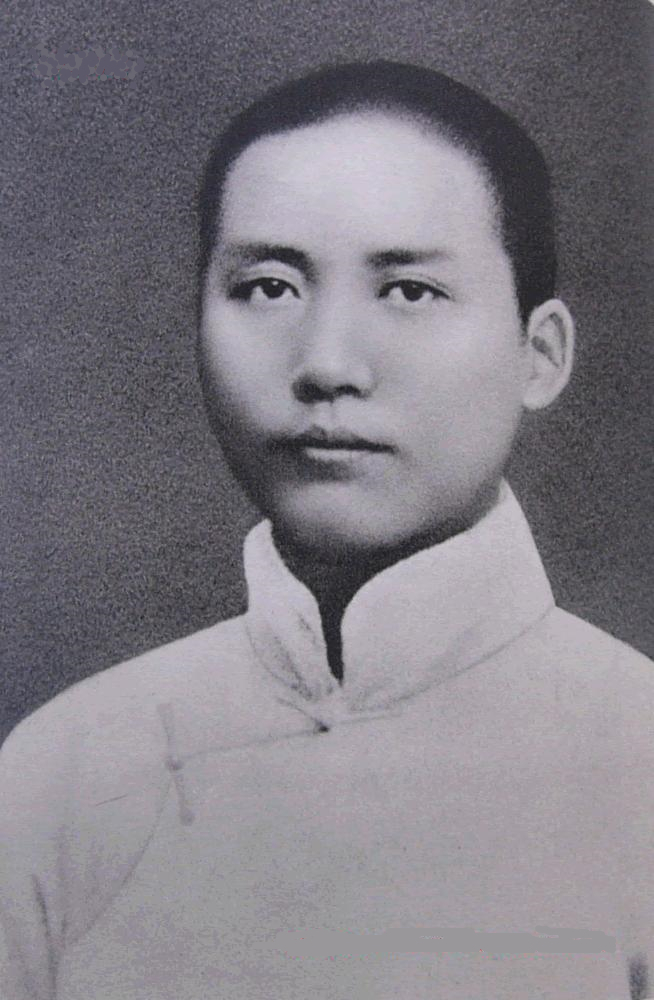
Source: inf.news -
In Shanghai's French concession, Chen Duxiu and Li Dazhao established the Chinese Communist Party in 1921 as a study group and informal network. Along with creating a branch of the Socialist Youth Corps and a Cultural Book Society that built a bookshop to spread revolutionary literature throughout Hunan, Mao established a branch in Changsha. In the hopes that a Hunanese constitution would expand civil freedoms and make his revolutionary activities easier, he participated in the drive for Hunan autonomy. Mao forgot about his role when the campaign succeeded in securing provincial autonomy under a new warlord. Small Marxist organizations had been established in Shanghai, Beijing, Changsha, Wuhan, Guangzhou, and Jinan by 1921. It was agreed to organize a central meeting, which got off on July 23, 1921, in Shanghai.
13 delegates, including Mao, were present for the inaugural session of the National Congress of the Chinese Communist Party. In order to avoid discovery, the delegates relocated to a boat on South Lake in Jiaxing, in Zhejiang, when the authorities deployed a police spy to the convention. Even though Soviet and Comintern delegates were present, the first congress stuck to the traditional Marxist view that only the urban proletariat could lead a socialist revolution and rejected Lenin's advice to accept a short-term alliance between the Communists and the "bourgeois democrats" who also supported a national revolution.
Mao used a number of strategies to strengthen the party in Changsha while serving as party secretary for Hunan. He established the Self-Study University in August 1921, which was headquartered on the grounds of the Society for the Study of Wang Fuzhi, a Qing period Hunanese philosopher who had defied the Manchus and provided readers with access to revolutionary literature. To combat illiteracy, he joined the YMCA Mass Education Movement, but he also changed the textbooks to accommodate radical viewpoints. He persisted in mobilizing employees to strike against Zhao Heng's rule in Hunan. But labor-related concerns remained crucial. Contrary to subsequent Party historians, both "proletarian" and "bourgeois" tactics were used in the renowned and victorious Anyuan coal mine strikes. In addition to organizing the miners, Liu Shaoqi, Li Lisan, and Mao established schools and cooperatives and collaborated with local intellectuals, nobility, military commanders, business owners, Red Gang dragon chiefs, and even religious leaders.
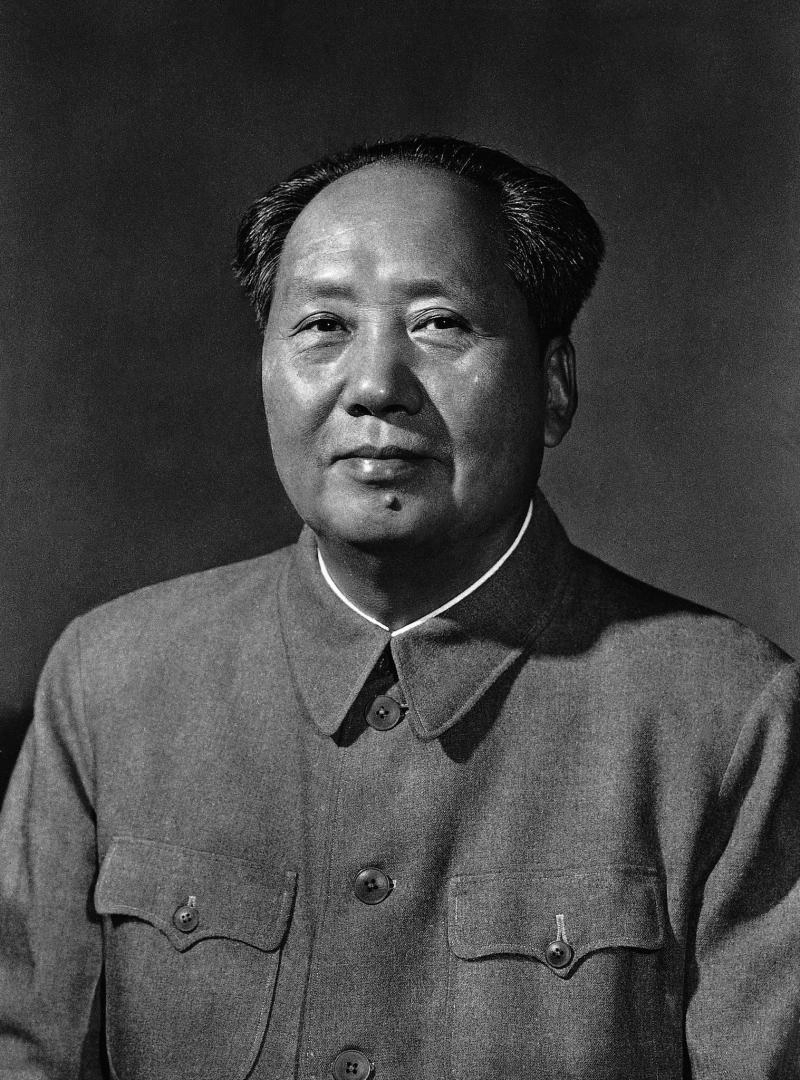
Source: quotepark 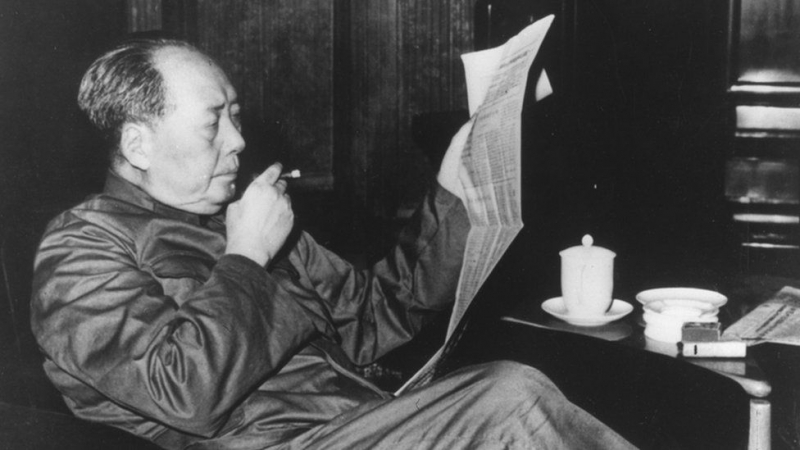
Source: bbc.com -
The Chinese Communist Party (CCP) oversaw an economic and social campaign known as the Great Leap Forward (Second Five Year Plan) in the People's Republic of China (PRC) from 1958 to 1962. Through the establishment of people's communes, CCP Chairman Mao Zedong began the effort to transform the nation from an agricultural economy into a communist society. Mao ruled that more should be done to enhance grain production and introduce the industry to the rural. Local authorities fought to meet or exceed quotas that were based on Mao's overstated promises out of fear of anti-Rightist campaigns, collecting fictitious "surpluses," and abandoning farmers to starve to death. Higher authorities were afraid to speak out about the economic catastrophe that these policies were causing, and national leaders did little to nothing to address the drop in food production while blaming the weather. The Great Chinese Famine, which is considered to be the greatest or second-largest famine in human history, claimed millions of lives in China during the Great Leap, with estimates varying from 15 to 55 million.
The gradual implementation of required agricultural collectivization was one of the most significant shifts that happened in the lives of rural Chinese peasants. Private farming was outlawed, and those who practiced it suffered retaliation and were branded counter-revolutionaries. Social pressure, public demonstrations, and forced labor were all used to impose restrictions on rural residents. Although it was said that rural industrialization was a campaign objective, "the Great Leap Forward's flaws prevented its progress." China's GDP contracted twice between 1953 and 1976, once during the Great Leap and once after.
Mao Zedong handed up day-to-day control of the party in 1959 to pragmatic moderates like Vice Premier Deng Xiaoping and Chinese President Liu Shaoqi, and the CCP carefully examined the harm caused by conferences it conducted in 1960 and 1962, particularly the "Seven Thousand Cadres Conference." Mao did not change his positions on his ideas; instead, he attributed failures to poor implementation and "rightists" who were against him. To crush resistance and restore his hold on power, he started the Socialist Education Movement in 1963 and the Cultural Revolution in 1966. The 1975 Banqiao Dam catastrophe (under the influence of Typhoon Nina), which occurred from the collapse of dozens of dams built in Zhumadian, Henan during the Great Leap Forward, claimed somewhere from tens of thousands to two hundred and forty thousand lives.
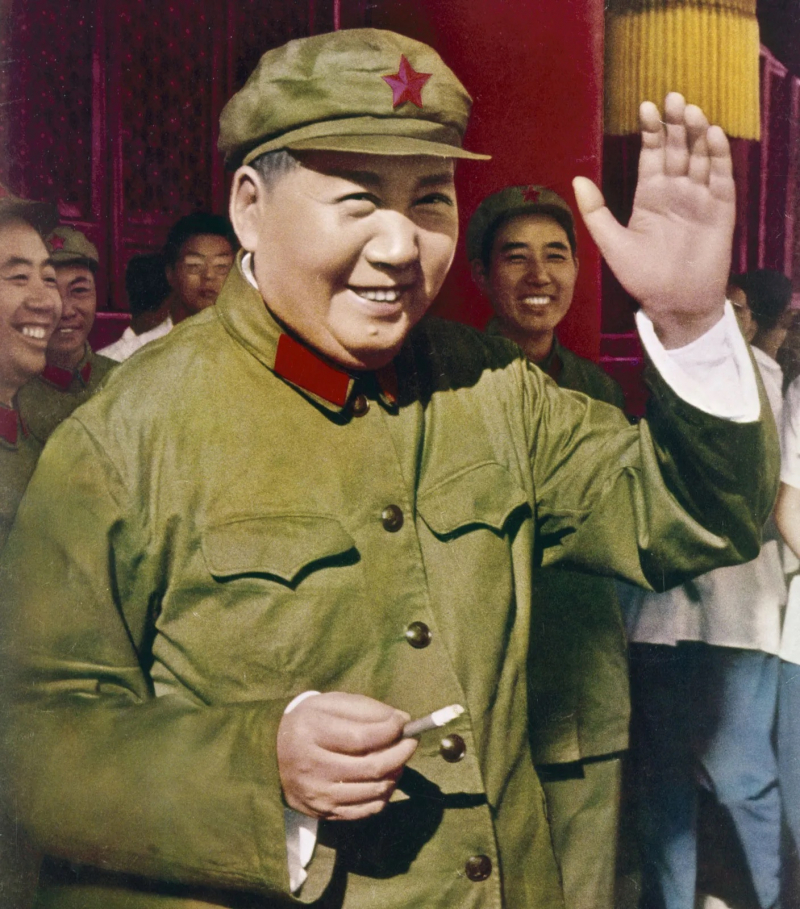
Source: britannica 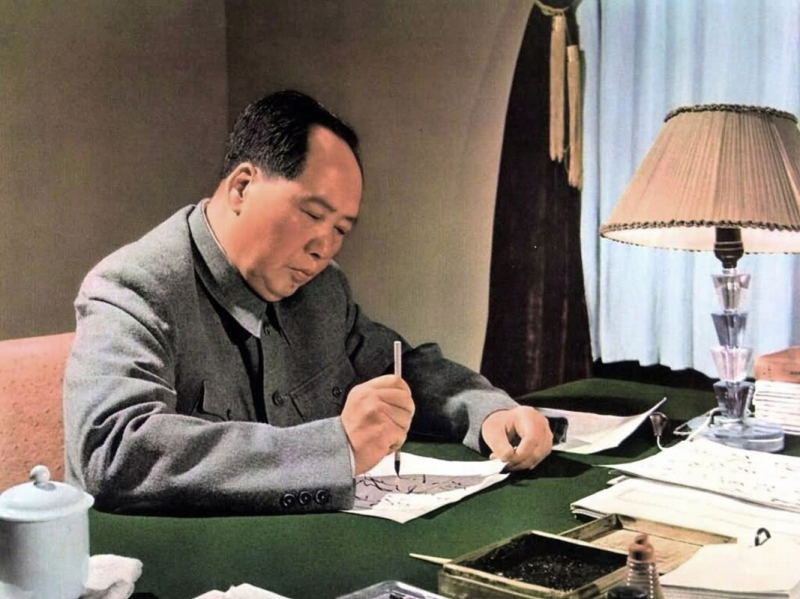
Source: sothebys -
Mao remains a controversial figure and there is little agreement over his legacy both in China and abroad. He is widely considered one of the most significant and influential people of the twentieth century. He's also a political thinker, theorist, military strategist, poet, and visionary. He was lauded and commended for pushing imperialism out of China, uniting the country, and putting an end to decades of civil strife. He is also recognized for increasing the position of women in China, as well as literacy and education. According to a December 2013 poll conducted by the state-run Global Times, about 85 percent of the 1,045 respondents thought that Mao's successes exceeded his shortcomings.
His astute judgment and astute thinking contributed to the reshaping of a powerful country's sociopolitical systems, and he tirelessly opposed injustice and inequality. He is credited with stabilizing China and significantly boosting both life expectancy and overall population. Despite his accomplishments, his acts, ranging from the persecution of his opponents to his agricultural revolution that caused the Great Chinese Famine, resulted in the deaths of 40 to 70 million people, the highest death toll produced by a single person in human history.
During his 27-year rule, his actions killed tens of millions of people in China, more than any other 20th-century leader, via famine, persecution, prison work in laogai, and mass executions. Mao seldom delivered clear orders for people's physical annihilation. According to author Philip Short, the vast majority of individuals who died of Mao's initiatives were accidental victims of starvation. The others, estimated to be three or four million people, were the human byproducts of his epic fight to change China. China's population increased from around 550 million to over 900 million during his reign, owing to the government's failure to strictly enforce its family planning policy, prompting his successors, such as Deng Xiaoping, to implement a strict one-child policy in order to deal with human overpopulation. Insurgents continue to adopt Mao's revolutionary tactics, and his political theory is still supported by numerous Communist groups across the world.
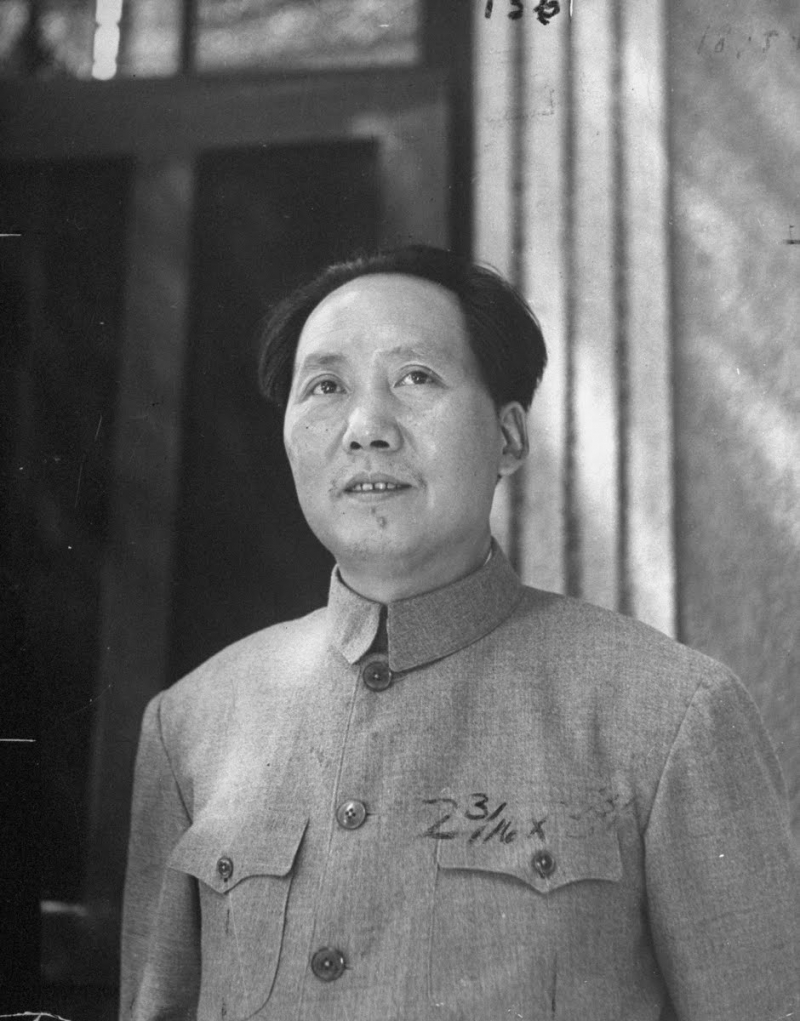
Source: artsandculture 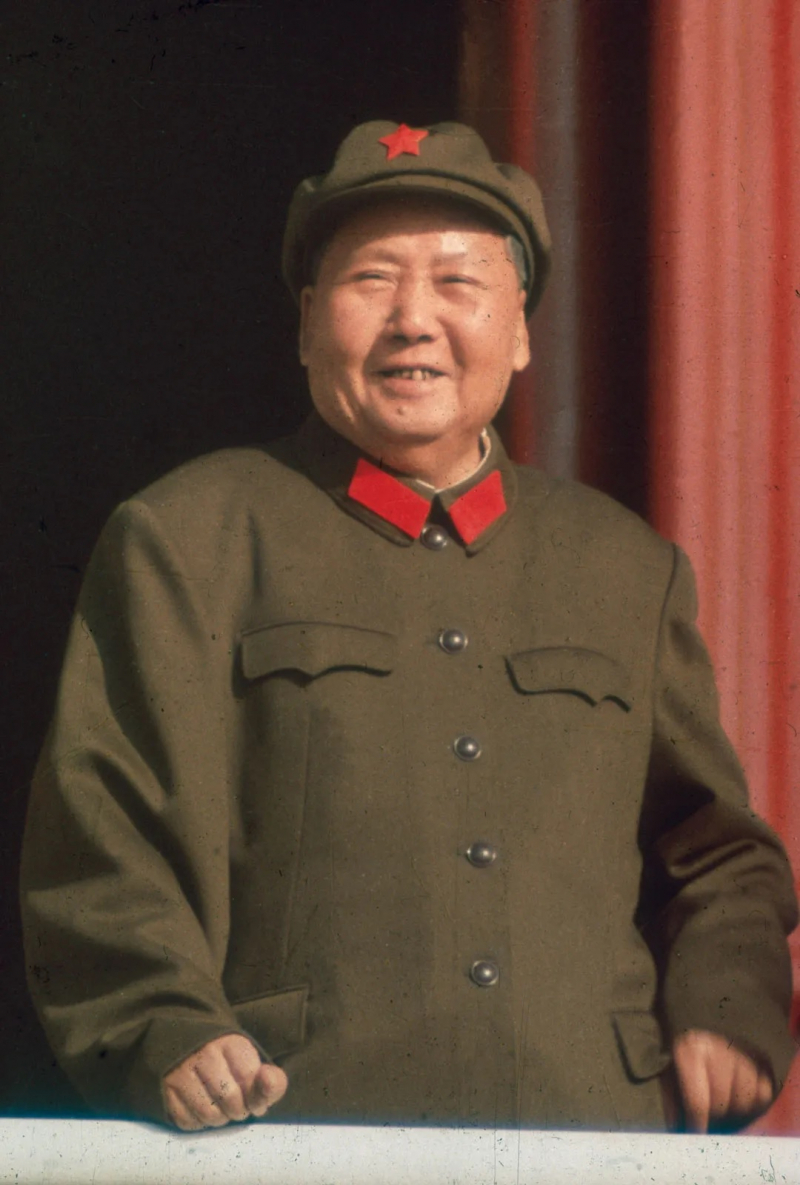
Source: britannica -
Mao maintained his influence until his death, even though he was physically debilitated, which is one of the interesting facts about Mao Zedong. He died on September 9, 1976, after suffering from a series of heart attacks. A lifetime of heavy smoking, as well as speculations of Parkinson's Disease, are considered to have harmed his health. Up to a million people gathered in Tiananmen Square to pay their respects during his burial ceremonies. Chairman Mao's embalmed body is freely exhibited in his tomb to this day.
For one week, Mao's embalmed body remained in state at the Great Hall of the People, wrapped in the CCP flag. One million Chinese people filed past, many of them openly sobbing or exhibiting despair, as outsiders watched on television. Mao's official photo was displayed on the wall, beside a banner that said, "Carry on the cause left by Chairman Mao and carry on the cause of proletarian revolution to the end." The body was transported in a van to the 305 Hospital on September 17, where his internal organs were preserved in formaldehyde.
On September 18, cannons, sirens, whistles, and horns were sounded simultaneously across China, and a three-minute quiet was observed. Millions of people crowded Tiananmen Square as a military band played "The Internationale." Hua Guofeng completed the event atop Tiananmen Gate with a 20-minute eulogy. Despite Mao's desire that his remains be incinerated, his body was eventually permanently displayed in the Mao Zedong Mausoleum so that the Chinese people might pay their homage.
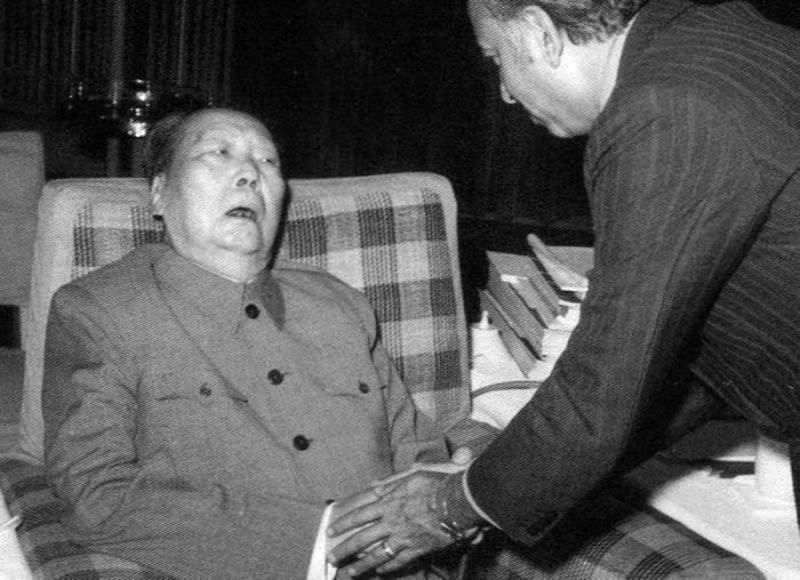
Source: rarehistoricalphotos 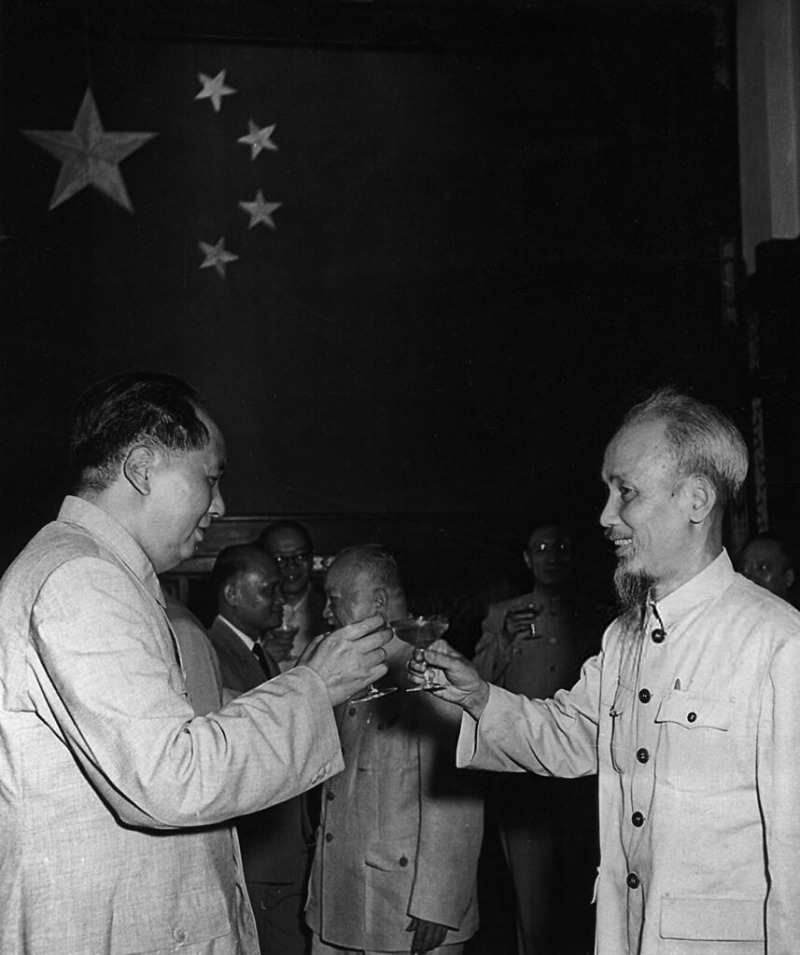
Source: flickr.com -
In August 1968, China was suddenly engulfed by a mango craze. The fruit was lauded in poetry, revered on shrines, and traveled the country like a star. People posed for photographs alongside mangoes, drank tea from mango cups, and smoked MangGuo cigarettes. Thousands of villagers clashed in Guizhou over a black-and-white mango photograph. Surprisingly, the majority of the fruit devotees have never tried one. In fact, the mango was essentially unknown just a few months ago from that time.
The mango cult arose amid the upheaval and terror of Chairman Mao's Cultural Revolution, a decade-long campaign to rid the communist society of any vestiges of capitalist ideas and traditional Chinese culture. The Great Leap Forward, a series of agricultural and industrial reforms that resulted in starvation and an estimated 45 million fatalities, harmed Mao's reputation. He called on Chinese youth to dig out "capitalist roaders" and relics of the so-called feudal past in order to restore his power and clear out political competitors.
Mangoes were employed as a working-class offering during Chairman Mao's reign. As part of his dedication to China's working class, the Chairman re-gifted mangoes brought by a Pakistani delegation to industrial employees in Beijing. The manufacturing workers were so moved by the Chairman's willingness to sacrifice his own mangoes for them that they attempted to preserve the fruits. If a mango spoiled, it was used to make a community soup. Wax mangoes were also distributed as presents, and street parades were arranged to commemorate the mango and, of course, Chairman Mao.
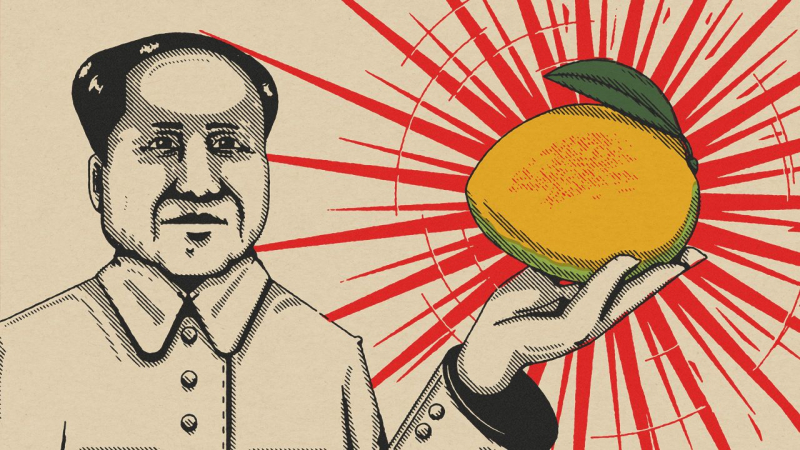
Source: atlasobscura 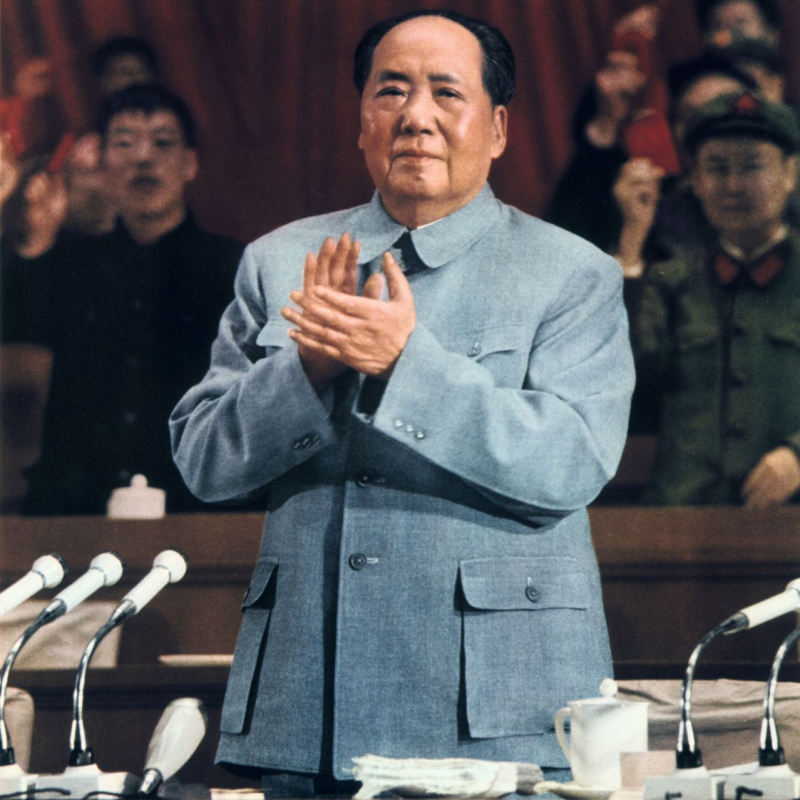
Source: wsj.com -
This is also one of the most interesting facts about Mao Zedong for many people. The Selected Works of Mao Zedong, released in four volumes by the People's Publishing House in 1951, is the principal repository of his pre-1949 writings. A fifth book, which brought the timeline up to 1957, was temporarily produced during Hua Guofeng's leadership but was later pulled from circulation due to alleged ideological faults. There was never an official "Complete Works of Mao Zedong" collection that included all of his known works. Quotations from Chairman Mao Tse-tung, often known as the "Little Red Book" in the West and the "Red Treasure Book" in Cultural Revolution China, are credited to Mao. This is a compilation of brief snippets from his many speeches and publications (most of which can be found in the Selected Works), edited by Lin Biao and organized thematically. Some of Mao's most famous quotations may be found in the Little Red Book.
Before and after assuming power, Mao wrote extensively on political strategy, commentary, and philosophy. Mao also accomplished Chinese calligraphy with a distinct style. During his lifetime, Mao was regarded as a master of calligraphy in China. His calligraphy may still be seen today on the Chinese mainland. His work inspired a new style of Chinese calligraphy known as "Mao-style" or Maori, which has grown in popularity since his death. There are several competitions that specialize in Mao-style calligraphy.
Mao's schooling began with Chinese classical literature, as it did for other Chinese intellectuals of his period. Mao told Edgar Snow in 1936 that he began studying the Confucian Analects and the Four Novels at a rural school when he was eight years old, but his favorite books were Water Margin, Journey to the West, and Romance of the Three Kingdoms, and Dream of the Red Chamber. Mao began publishing poetry in traditional styles in his teens, and his ability as a poet helped shape his image in China after he came to power in 1949. The famous Tang dynasty poets Li Bai and Li He impacted his style. Some of his most well-known poems are "Changsha" (1925), "The Double Ninth" (October 1929), "Loushan Pass" (1935), "The Long March" (1935), "Snow" (February 1936), "The PLA Captures Nanjing" (1949), "Reply to Li Shuyi" (May 11, 1957), and "Ode to the Plum Blossom" (December 1961).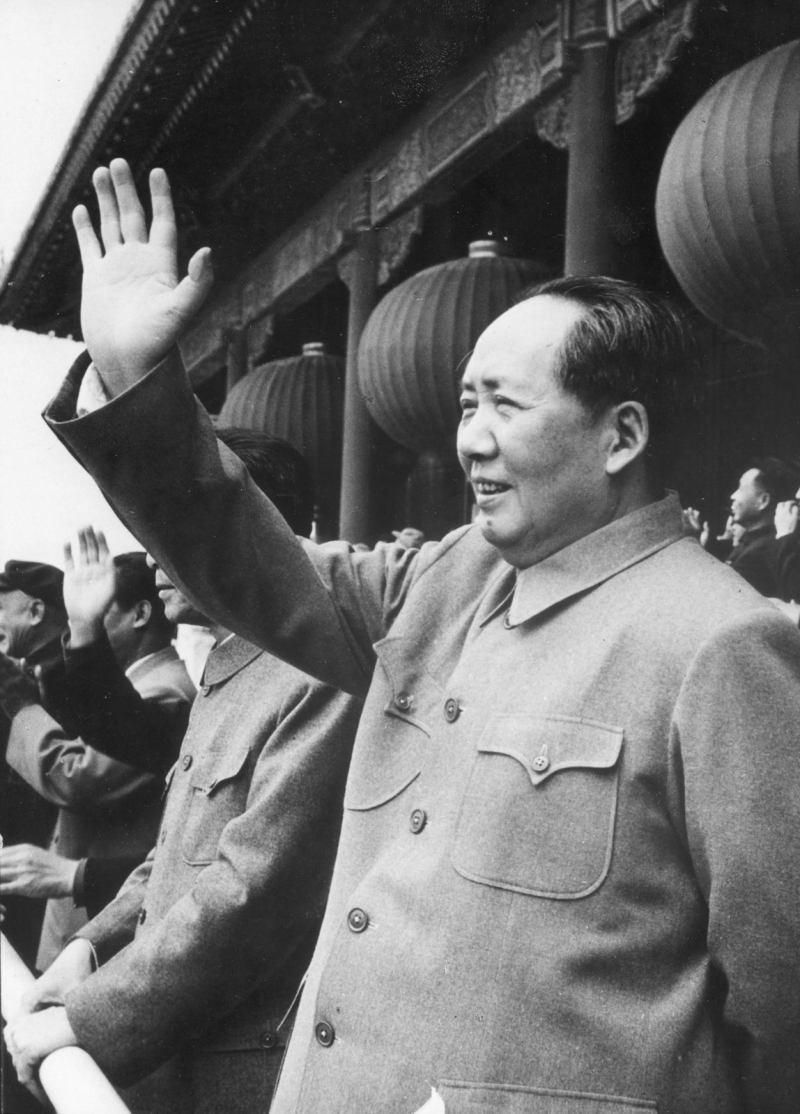
Source: britannica 
Source: kienthuc.net.vn/



























